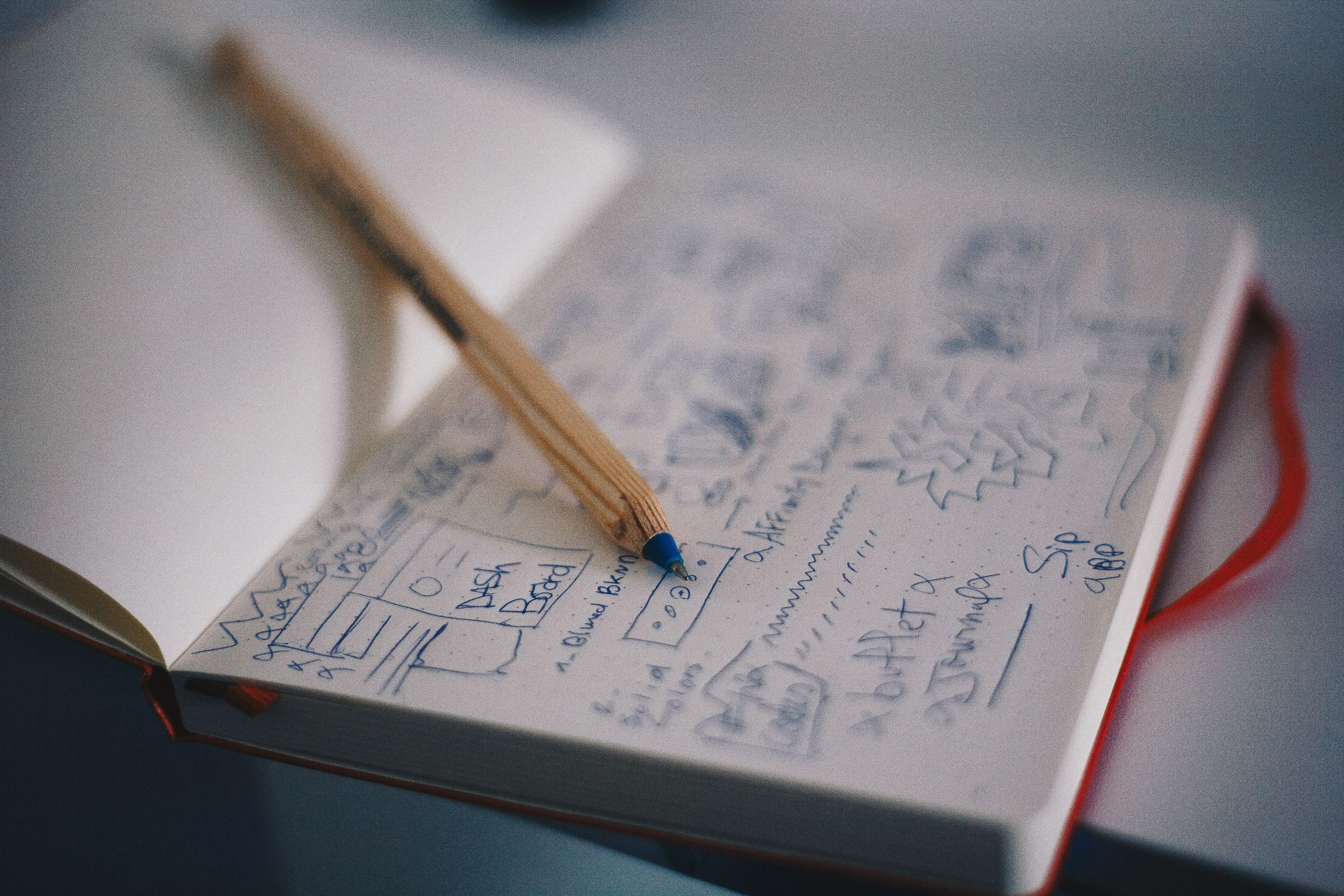
Design
Now the learners begin to hammer out the initial framework for the solution they are developing to apply to the initial challenge. The starting points for this stage are our two key focal points again: the audience and the purpose.
-
Learning Areas: English, HASS, HPE, Technologies, Science
Year Levels: 5-10
Teaching Time: 55 mins.
Resources required:
• 3 packets of toothpicks, play dough
• Device capable of presenting a video to the class
• Devices to produce a presentation slide or poster materials
• Black/white board or chart paper
• Journal (exercise or scrapbook) 1 per student
• Conference file (formative assessment)
• Final assessment rubric, one per student.
Level of teacher scaffolding:
• Medium - facilitate class discussion
• Conference with students regarding project development
Learning Intentions
The learners develop a feasible design for a solution to suit the purpose and audience. They also have a clear and achievable plan as to how to develop this solution.
Keywords: Design
-
Create a new idea or innovate on an existing sustainable solution. You do not need to make the product nor know how to design it - just come up with an innovative idea. Develop your idea to the pitch/presentation stage. Include a poster or slide. You can present your idea in person or via video, 3 minutes in length. A panel of judges will provide feedback.
Refer to the 6 Stages of Solutions Thinking.
-
5 minutes
Toothpick Towers
Small groups (3-4 students) build the tallest tower they can from toothpicks and play dough (squash ball sized amount).
-
10 minutes
DESIGN
Design the solution. Create a blueprint of the ideas and workshop them thoroughly. Work back from the future!
Formative assessment via conferencing and single-point rubrics by the teacher is critical at this point. If your learners don't get accurate and timely feedback, they may attempt solutions that are inappropriate or unachievable. However, there is also value in allowing the students to make mistakes and develop alternative solutions from this. It's a tap dance!
A great DESIGN thinking task is backcasting.
Backcasting is a Futures Studies method that starts with a preferred future and works back to the present, identifying actions over time needed to achieve the preferred future
Activity: "Back from the Future"
Imagine, you have finished your successful pitch. The panel's feedback was positive, and you were able to answer all questions with confidence. What had to happen for you to get there?
1. You practiced and rehearsed your revised presentation.
2. Consider possible questions from judges.
3. You adjusted pitch after feedback from teacher and peers
4. You practiced and rehearsed your pitch to your peers and teacher.
5. You completed your final adjustment to your slide/poster.
6. Your slide and poster capture the appropriate information in regard to your sustainable solution. Every element is useful and guides your audience to agree with your idea.
7. You agree on your final iteration of your concept and begin drafting the best way to communicate your solution.
8. You dream of many ideas and discover different aspects to your iterations before deciding on your chosen solution.
9. You taste different ideas with solution trees.
10. You research your chosen problem/solution using the internet, books, magazines, interviews with industry partners.
11. You believe you have the ability to co-create a sustainable future and you have a strong 'why'.
Add 'backcasting' to your toolbox of strategies to give form to your idea. In your journal, flesh out your backcasting steps as it pertains to your idea, e.g. research sustainable building material selector apps.
Below is an example of backcasting for a possible solution.
Concept - An app for new home builders which helps them to select Carbon Zero materials. App allows builder to enter preferred material to get information of eco-rating comparison, best option/alternative. If you can’t compromise it comes up with a carbon neutralising tip, e.g. build a vertical garden across entire backfence.
Backcasting;
1. Pitch is delivered successfully and confidently.
2. Pitch rehearsed and practiced in front of family and friends, feedback received and acted upon.
3. Slideshow/poster ready, palm cards ready.
4. Design Logo & Slogan ready.
5. Name of the app decided
6. How much carbon could be saved by implementing app choices. Research completed.
7. Select Images and info for slide.
8. What choices of housing components, choices of materials will you include?
9. Who is it for?
10. Benefits?
11. What are the current choices to encourage sustainable buildings?
Other thoughts...
Scope for new materials to be added, backed by research?
Further uses - renovations, commercial buildings, playgrounds, roads/driveways.
Prioritise backcasting stages, set dates, assign tasks if working in a group.
-
Feeling overwhelmed? Idea/concept not coming together? It might be time to form a group.
NextGen honours different ways of working and obtaining a sustainable solution. For some, taking full ownership of their idea is natural and for this challenge, they are feeling the wind beneath their wings. Others work best if they can combine skills, bounce ideas to and fro and result in a team effort toward a wonderful and viable sustainable solution.
This point in the process is optimal for making the decision if you carry on alone or join forces with a few classmates. Be honest and ensure you can all bring something to the solutions table. Ask yourself and your group the following questions;
1. Can you identify the superior idea?
2. Are you great at artwork or digital design?
3. Is research your jam?
4. Are you a presenting powerhouse?
Collaborate to Innovate!
-
10 minutes
Industry partner incursion or video (videos will continue to be made available on our website).
Ask your guest if they use the backcasting strategy in their concept development.
-
5 minutes
You are getting close to your destination, chart which thinking step you believe you need to visit before moving along. Add an arrow but remember to track your time with a star. Did you veer off course? Perhaps you found treasure on your journey anyway!
-
5 minutes
Review understanding of existing vocabulary.
Add Design & Backcasting to the word wall.
-
20 minutes
Keep in mind your audience (adult experts or industry representatives). You want to demonstrate that you are capable of conceiving of a great idea and you have the tenacity to back it up with research and development. Also, most importantly is your purpose, a Carbon Zero Future. Your solution must include sequestering carbon, increasing biodiversity, minimising waste or using renewable energy. These factors will guide your solution design.
-
5 minutes
Chart where you spent your project time on your Journey Map.
Review final assessment rubric.
Sleep on it
Start visualising yourself giving a great presentation. You are prepared, relaxed and confident.
-
-

Lesson 1 Introduction
-

Lesson 2 Define
-

Lesson 3 Discover
-

Lesson 4 Dream
-

Lesson 5 Design
-

Lesson 6 Deliver
-

Lesson 7 Debrief
-

Lesson 8 Expo
-

Lesson 9 Expo
-

Lesson 10 Celebrate

